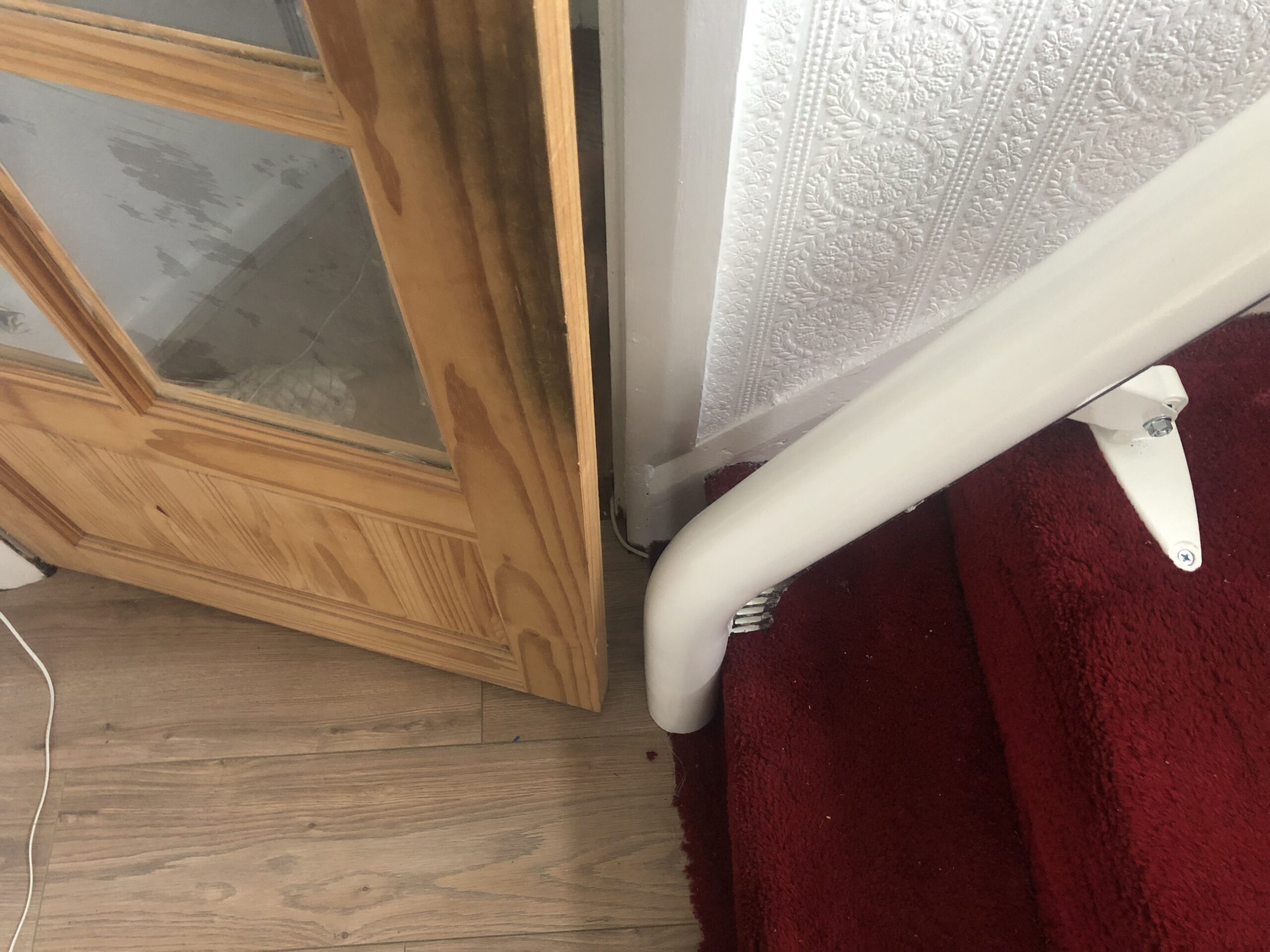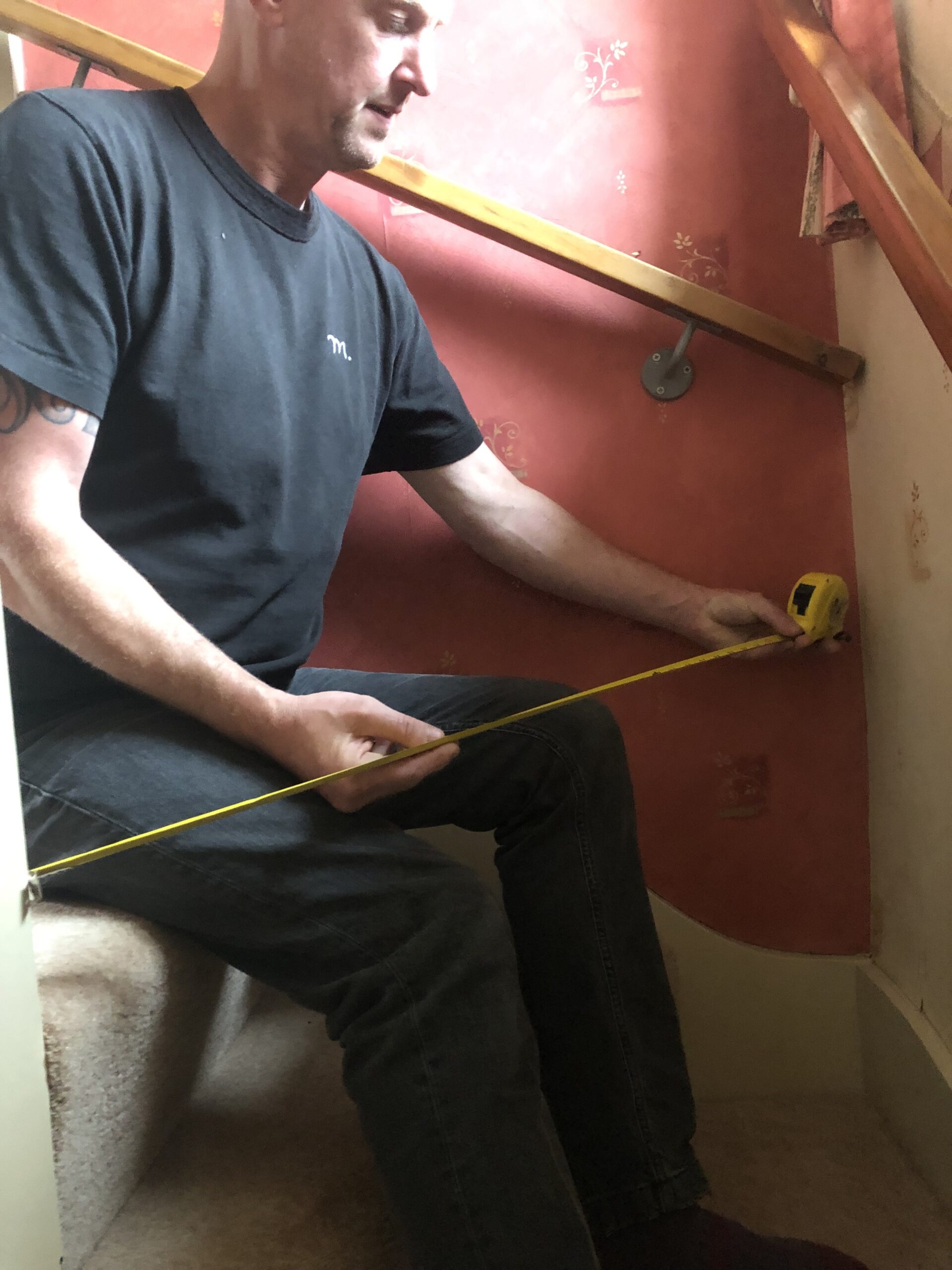
Stair Lift Measurements: What You Need to Know Before Installation
Considering having a stairlift installed? One of the most important steps is getting the right measurements. Accurate stair lift measurements ensure you don’t order a stairlift which won’t fit!
In this guide, we’ll walk you through the key measurements that need to be taken before choosing the correct stair lift for your property.
If you want to take some measurements yourself, here’s a quick guide. For more complex staircase arrangements, we recommend contacting us. Call 0800 046 3438.
Why Accurate Measurements Matter
Every staircase is unique. Even small differences in width, curve, or step height can affect which stairlift model is most suitable. Taking precise measurements ensures:
- The correct stairlift is chosen for the best fit.
- The stairlift rail fits snugly and safely.
- The seat has enough space for manoeuvre
- There’s no obstruction for other people using the stairs.
UK Stairlifts always carry out a free, no-obligation home survey before installation. That’s because we like to make sure a stairlift will be right for your home.

Key Stair Lift Measurements
Here are the main measurements needed for a perfect stairlift fit:
1. Staircase Length

This is the distance from the bottom floor to the nose of the top step, touching each stair tip on the way. It determines how long the rail needs to be. We call this PXTTN: or Point X To Top Nose, from one floor to another. Point “X” being the floor beneath the stairs. Make sure the tape measure is straight down the line of the stairs, parallel to the wall.
2. Staircase Width
The width of your staircase is crucial. Our most used straight stairlifts require a minimum width of around 25.9 inches for straight stairs. Although some stairlifts for narrow stairs can do less, like the Flow X, designed for tight spaces. It’s also important to measure the narrowest point on your staircase, where a stairlift will have the tightest fit.

3. Top Clearance (Landing Space)
At the top of the stairs, there must be enough space for the user to safely dismount the stairlift. We measure the clear landing area to ensure easy transfer on and off the seat. Certain lifts require a turning space at the top/bottom of the stairs, too. So this measurement makes sure a lift is appropriate for a specific staircase.
4. Bottom Clearance
There should also be space at the bottom of the staircase for the stairlift rail to start and for the seat to park safely without blocking doorways or hallways. In some situations, we will choose a specific stairlift if there’s no room for parking certain makes and models of stairlift. Here’s an example of an obstacle which can determine which models are appropriate:

5. Step Height and Depth
Consistent step height and depth ensure a smooth rail angle. Measuring these accurately helps avoid uneven movement or uncomfortable transitions. With outdoor stairlifts, for example, steps can be uneven which makes them problematic for stairlift installation.
6. Bends and Turns (for Curved Staircases)
For curved staircases, detailed measurements are taken of every curve, corner, and angle. A custom rail is then built to match your exact staircase shape. Our surveyors use advanced digital tools to capture these precisely. If a staircase is a difficult one, we use a photo-survey to take exact measurements and a digital “imprint” of the staircase to ensure a specific model will fit.
Who Takes the Measurements?
You don’t need to worry about doing it yourself. A professional surveyor from UK Stairlifts will visit your home and take all the required measurements using specialist equipment. This ensures your stairlift fits perfectly and meets all safety standards.
Book Your Free Home Survey Today
At UK Stairlifts, we provide free, no-obligation stairlift surveys to make sure every installation is tailored to your home. Whether you have a straight, curved, or narrow staircase, we’ll find the right fit for you.
📞 Call us today on 0800 046 3438 or
👉 contact us online and leave a message
Here you can see the engineer measuring the distance from the rail to the staircase, to ensure a proper fit.
View more of our videos on our YouTube channel here.


